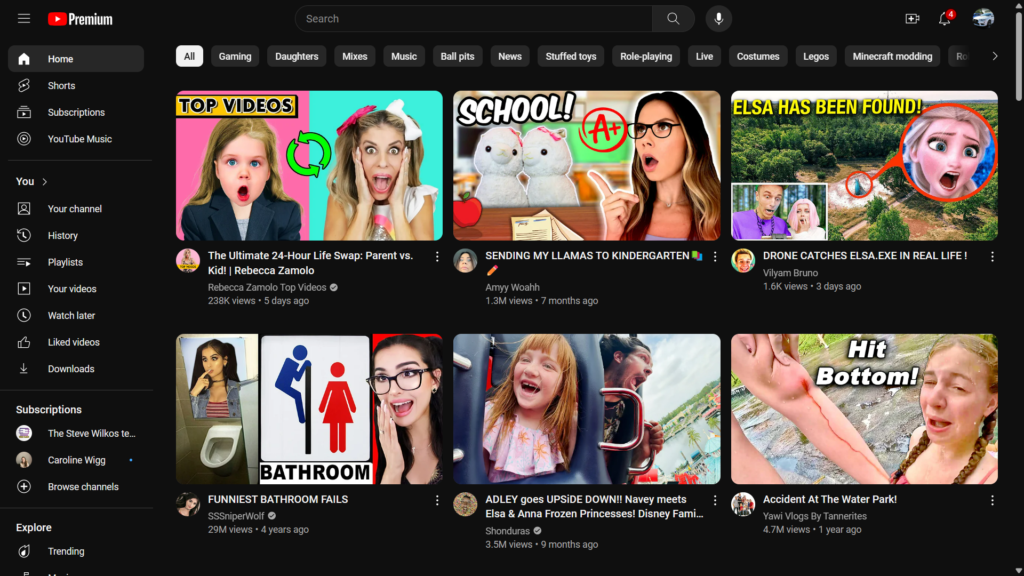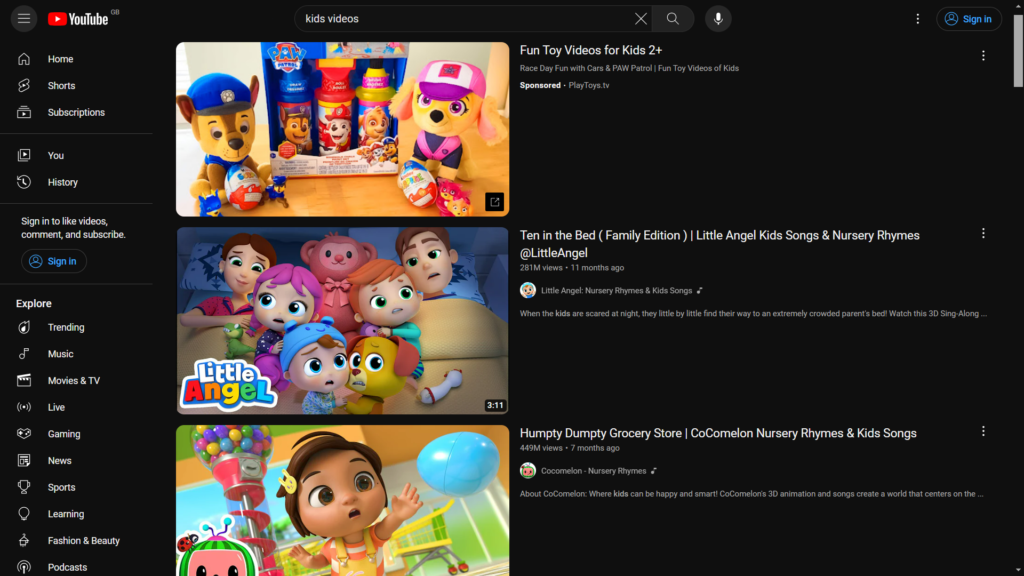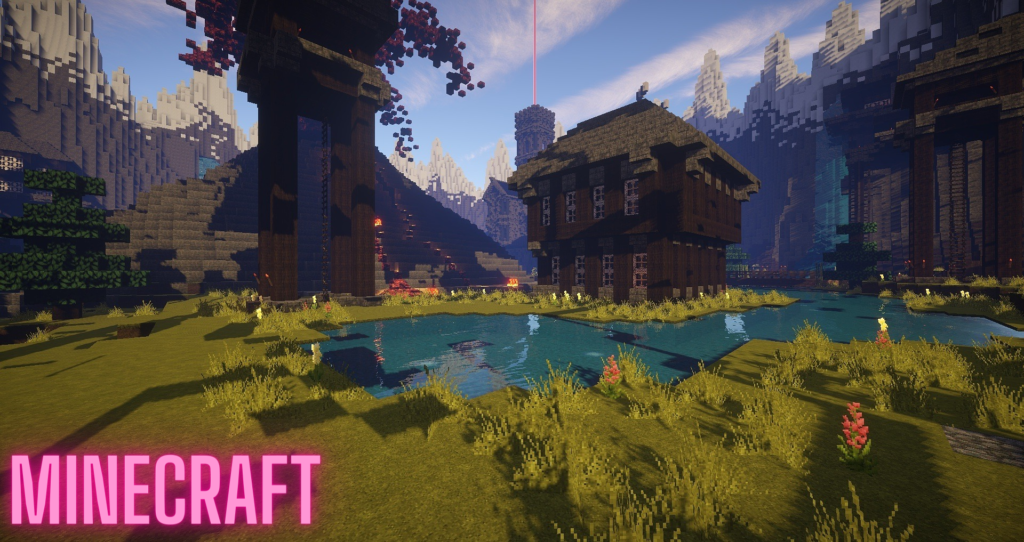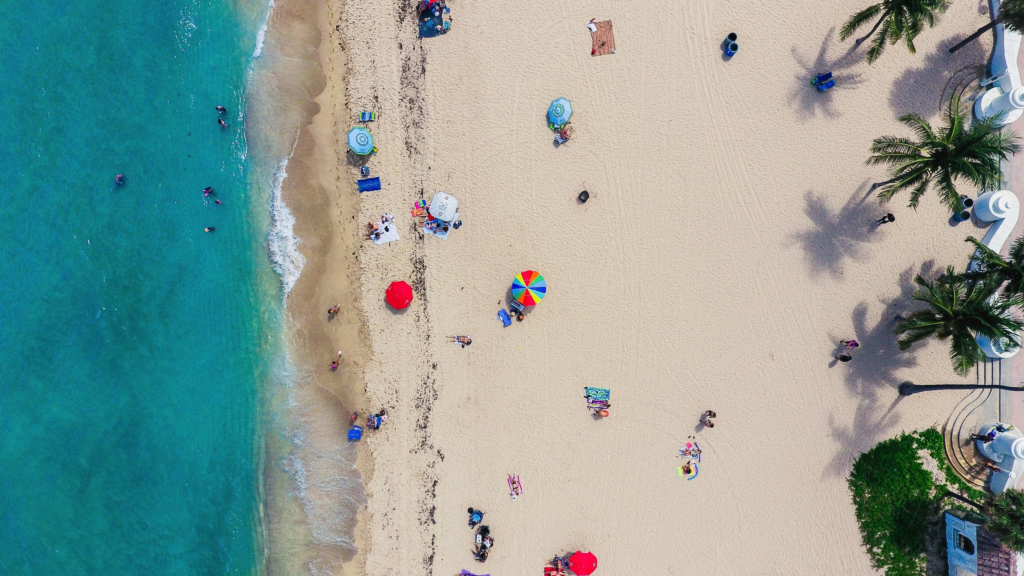The Rise of Kids on YouTube: Lights, Camera, Action!

YouTube was started in 2006 and has since become a household name, not only for adults but also for kids. We’ve all seen probably the most well know clip ” Charlie bit my finger”. With its vast collection of videos, it has become a go-to platform for children of all ages. Whether they are watching their favorite cartoons, learning new things, or exploring their creativity, YouTube has become an integral part of their lives.
YouTube is a massive platform, and it’s no surprise kids are drawn to the fun, creative world of online videos. But before you jump in and hit record, there are some important things to consider, especially for younger YouTubers.
History of YouTube.
Firstly we just wanted to give you a brief history of YouTube.
YouTube was launched in December 2005 by three former PayPal employees: Chad Hurley, Steve Chen, and Jawed Karim. The idea came after their frustration by the lack of online videos of a viral event (the infamous Super Bowl halftime show incident that year), and that sparked the idea for a video-sharing platform.
The first video ever uploaded, titled “Me at the zoo,” was a humble 19-second clip by co-founder Jawed Karim. But YouTube quickly gained traction, with users uploading all sorts of videos, from funny cat compilations to music videos.
By 2006, Google saw the potential and acquired YouTube for a whopping $1.65 billion. Since then, YouTube has exploded into a global phenomenon, becoming the second most visited website in the world. It’s now considered the second most used search engine on the web, So that’s basically Google at the top two spots!


The Benefits of Kids Using YouTube
While some may argue that too much screen time is detrimental for children, there are actually several benefits to kids using YouTube:
- Education and Learning: YouTube offers a wide range of educational content that can help kids learn new concepts, develop their language skills, and explore various subjects in a fun and engaging way.
- Creativity and Imagination: Many kids are inspired by the content they watch on YouTube and often try to recreate it or come up with their own creative ideas. This can enhance their imagination and foster their artistic abilities.
- Entertainment: Let’s face it, kids love to be entertained. YouTube provides a vast array of entertaining videos that can keep them engaged and happy. From animated stories to music videos, there is something for every child’s taste.
- Social Interaction: YouTube allows kids to connect with other children who share similar interests. They can comment on videos, join communities, and even collaborate with other young creators.
Safety First!
- Channel Ownership and Management: You can create a channel under your account with your child as the creative lead. This ensures parental control over content and privacy settings. More on this below.
- Age Appropriate: YouTube’s guidelines state that children under 13 can’t have their own accounts. Parents can create a channel with their own account, but be sure to supervise activity closely.
- Content is King: Keep it positive and family-friendly. Avoid anything that might be upsetting or inappropriate for young viewers.
- Privacy Matters: Discuss online privacy with your child. Avoid showing personal information like addresses or full names in videos.
Creating a Kids Channel on YouTube
If they are over 13 they can create a gmail account which in turn allows the creation of a YouTube Channel. BUT.. What if my child is under 13, We see many kids making content for YouTube?
If you want to create a channel for an under 13 year old you will have two things to take into consideration when your child does turn 13 and wants to manage their YouTube channel independently:
- Transfer Ownership: (Hardest) YouTube allows transferring channel ownership to another Google account. This would give your child full control over the channel, including content management, monetization (if applicable), and privacy settings. This can however be a little complicated and to do this you must have a Brand Account.
- Create a New Channel: (Easiest) Setting up a new channel under their own Gmail address that you manage for her is another option. This gives you continued oversight while she learns the ropes of responsible online presence and content creation.
Here’s a breakdown of the pros and cons for each approach:
Transferring Ownership (Pros):
- Full Control: Your child has complete autonomy over her channel.
- Established Channel History: The existing channel’s viewership and subscriber base can be a springboard for further growth.
Transferring Ownership (Cons):
- Less Parental Oversight: You relinquish control over content and potential safety concerns related to comments or interactions.
- Monetization Responsibility: If the channel earns revenue, your child becomes responsible for managing it according to YouTube’s monetization policies (which you can explain to them beforehand).
Creating a New Channel (Pros):
- Continued Parental Guidance: You can maintain oversight and ensure content is age-appropriate and safe.
- Learning Responsibility: Your child learns about managing a channel in a supervised environment.
Creating a New Channel (Cons):
THESE ARE ONLY CONS IF YOU HAVE ALREADY STARTED GAINING A FOLLOWING ON A CHANNEL!
- Starting From Scratch: The new channel won’t have the existing audience or subscriber base.
- Potential Confusion: Having two channels might be confusing for viewers who knew the original one.
Here’s what you can do to decide:
- Discuss with your child: Talk to them about their aspirations for the channel and how much responsibility they feels ready for.
- Consider them maturity level: Evaluate their ability to handle online safety, potential negativity in comments, and responsible content creation.
- Gradual Transition: If transferring ownership, consider a trial period where you offer guidance and support as she eases into full control.
Ultimately, the best approach depends on your child’s maturity level and your comfort level with relinquishing control. There’s no right or wrong answer – choose the option that fosters their creativity and online safety.


Getting Started with content creation.
If your child has expressed an interest in creating their own YouTube channel, here are some steps to help them get started:
- Focus on Fun and Learning: It’s all about having fun and expressing their creativity. Educational content can be weaved in with playtime.
1. Define the Channel’s Focus
Before diving into the world of YouTube, it’s important to determine what the channel will be about. Encourage your child to choose a topic they are passionate about, whether it’s gaming, toy reviews, science experiments, or storytelling. Having a clear focus will help attract a specific audience and make the channel more appealing.
2. Plan and Prepare Content
Content Brainstorming: Sit down with your child and brainstorm ideas together. What does they love to do? Draw? Play with toys? Science experiments? Keeping it age-appropriate and focusing on their interests is key.
This will ensure that they have a steady stream of content to upload and keep their audience engaged. Encourage them to think outside the box and come up with unique ideas that showcase their personality and interests.
3. Set Up the Channel
Creating a YouTube channel is a straightforward process. Assist your child in setting up an account using their own email address (with your supervision) or a family account if they are younger. Choose a catchy and relevant channel name and customize the channel’s appearance with appealing artwork and a channel trailer.
4. Create and Edit Videos
Equip your child with a suitable camera or smartphone to record their videos. Help them learn basic video editing skills using user-friendly software. Encourage them to experiment with different video styles, such as vlogs, tutorials, or challenges, to keep their content diverse and engaging.
You will also nee to consider video editing software, Below are a few free options:
- DaVinci Resolve (Windows, Mac): A professional-grade video editor with powerful editing features, color correction tools, and audio mixing. It has a bit of a learning curve, but the free version offers a surprising amount of functionality.
- iMovie (Mac): A user-friendly and intuitive option for beginners on Mac. It offers basic editing tools, transitions, and effects, making it great for creating simple videos or home movies.
- Kdenlive (Windows, Mac, Linux): A free, open-source option with a wide range of features. It’s more complex than iMovie but offers greater customization and flexibility.
- Clipchamp (Web): A browser-based video editor that’s easy to use and perfect for quick edits. It has a free plan with limitations, but paid plans offer more features and export options.
YouTube Set up on Amazon
Smart phone are a great start when you begin your YouTube journey but you may wish to check out some better cameras or recording equipment on amazon.
5. Ensure Safety and Privacy
As a responsible parent, it’s crucial to prioritize your child’s safety and privacy. Set up parental controls on their YouTube account and establish guidelines for online behavior. Teach them about the importance of not sharing personal information and how to handle comments and interactions with viewers.
6. Upload and Promote
Once the videos are edited and ready, guide your child through the process of uploading them to YouTube. Help them write engaging titles, descriptions, and tags that accurately represent the content. Encourage them to promote their channel through social media platforms and engage with their audience by responding to comments and questions.
7. Monitor and Supervise
While it’s important to give your child creative freedom, it’s equally important to monitor and supervise their YouTube activities. Keep an eye on the comments section and ensure that they are not exposed to any inappropriate content or negative interactions. Regularly review their videos and provide constructive feedback to help them improve their content.
Monetization Strategies
Although creating a YouTube channel for your child is a fun way to spend time together creating something great, further dawn the line you may with to consider YouTube Monetization. Some things to consider:
- The YouTube Partner Program: This allows you to run ads before, during, and after your videos. However, you need to meet YouTube’s requirements (1,000 subscribers and 4,000 watch hours in the last 12 months).
- Affiliate Marketing: Promote relevant products or services in your niche and earn a commission on sales.
- Sponsorships: Partner with brands to create sponsored content.
Monetization Revenue:
Unfortunately, there’s no one-size-fits-all answer on revenue. It depends on various factors like:
- Content Niche: Some niches have higher ad rates than others.
- Viewership and Engagement: More views and higher engagement lead to more ad impressions and potential clicks.
- Monetization Strategy: Ad revenue might be lower than affiliate marketing income for certain products.
Here are some benchmarks to give you a general idea:
- YouTube Ads: The average YouTube channel earns around $3 – $5 per 1,000 views (RPM).
- Affiliate Marketing: Commissions can vary greatly depending on the product or service.
Conclusion
YouTube can be a valuable platform for kids to learn, express themselves, and connect with others. By following these steps and providing guidance and support, you can help your child create a safe and enjoyable YouTube channel. Remember, the key is to strike a balance between screen time and other offline activities to ensure a well-rounded childhood experience.
Remember, building a YouTube channel takes time and dedication. Focus on creating high-quality content, engaging with your audience, and providing value. As your channel grows, you can explore monetization options.
EDIT:
Our youngest now has her own YouTube channel. We used the transfer of ownership route so the channel is currently connected to my own YouTube rather than setting her up with her own account. You can check out her channel HERE. It is a work in progress and new content will be added regularly.

Why not take a look at our post on Roblox, Many Children like to use this as starting point for creating YouTube videos.
*As an Amazon Associate, I earn commission from qualifying purchases.


